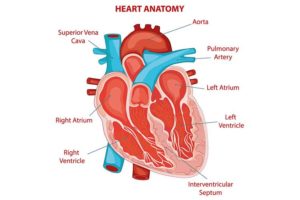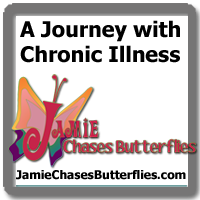February is American Heart Month and because we love you we will be sharing several topics related to heart health this month. In this article I will be sharing with you some information about Heart Defects.
According to the American Heart Association, about 9 out of every 1,000 babies born in the United States have a congenital heart defect.
Congenital heart defects are conditions that people are born with when the heart doesn’t develop normally before birth that effect the structure of the heart. In fact congenital heart defects are the most common of all birth defects. They might involve the walls or valves of the heart or the arteries and veins near the heart. These defects might disrupt the flow of blood through the heart by slowing down the flow of blood, making the blood go in the wrong direction or to the wrong place or completely block blood flow.
Many times there are few signs or symptoms of heart defects at birth and they are not found until a person is much older. Severe heart defects in newborns may show up at birth with the following symptoms:
- Rapid breathing
- A bluish tint to the skin, lips & fingernails called Cyanosis
- Fatigue
- Poor blood circulation
- Abnormal heart rhythms (arrhythmias)
- Body swelling (edema)
Treatments for heart defects may include medicine, catheter procedures, surgery or heart transplants. The type of treatments doctors prescribe are based on the type of defect, severity, age, size and general health of the child. In many cases congenital heart defects do not require any treatment at all. However some people may require medical care throughout their lifetime.
There are 18 specific, recognized, types of congenital heart defects. Anatomically each person may have some sort of variation from these types of heart defects. Because of the success of research and education, it is very common that a child born with a heart defect will be able to be overcome the defect and live to be a normal adult.
Common Types of Congenital Heart Defects
- Healthy Heart Function Defect
- Aortic Valve Stenosis (AVS)
- Atrial Septal Defect (ASD)
- Coarctation of the Aorta (CoA)
- Complete Atrioventricular Canal Defect (CAVC)
- d-Transposition of the great arteries
- Ebstein’s Anomaly
- I-transposition of the great arteries
- Patent Ductus Arteriosis (PDA)
- Pulmonary Valve Stenosis
- Single Ventricle Defects
- Hypoplastic Left Heart Syndrome (HLHS)
- Pulmonary Atresia/Intact Ventricular Septum
- Tricuspid Atresia
- Tetralogy of Fallot
- Total Anomalous Pulmonary Venous Connection (TAPVC)
- Truncus Arteriosus
- Ventricular Septal Defect (VSD)
This is not a complete list of congenital birth defects but as you can see there are many names for issues related to the heart. There are this list and more that can affect adults through their life.
Researchers are not sure what causes most congenital heart disease but heredity might play in role is several forms of heart defects. 
The heart has two chambers on the right and two chambers on the left side. Each side of the heart has different jobs in order to make sure blood is pumped through the body. In a heart that is properly functioning, the right side of the heart moves blood through pulmonary arteries to the lungs where it collects oxygen and sends it through pulmonary veins. On the left side of the heart blood is pumped through the aorta and out to the rest of the body.
The reason congenital heart defects sometimes resurface in adulthood is that even with successful treatment of defects in childhood, the heart may not be normal. Sometimes heart problems that are not very serious in childhood require attention as we age. Also sometimes complications arise during treatments as a child that may cause issues that need to be addressed later in life.
Risk factors that contribute to congenital heart defects have been found with the mother has several issues during pregnancy like:
- German measles (rubella)
- Type 1 or 2 Diabetes (gestational diabetes generally does not affect the development of the babies heart)
- Certain medications
- Heredity
- Smoking
Congenital heart disease complications may develop years after treatment for heart defects. some of them include: arrhythmias, heart infection (endocarditis), stroke, heart failure, pulmonary hypertension or heart valve problems. If you have signs or symptoms of any of these health problems or you were treated for heart defects a child please be sure to see your doctor regularly in order to make sure you are doing everything you can to live a healthy lifestyle.
Making smart choices about diet, exercise and habits are the best way to prevent heart disease. No matter how old you are, people benefit from regular exercise and a balanced diet with plenty of water, proper amounts of meat, poultry, fish, a variety of colorful vegetables and the right amount of fruits, nuts, seeds and grains. Choosing food low in saturated fat, trans fat and sodium and low in sugar is a good idea for everyone. If you are needed help creating a wellness plan that includes all your personal goals, preferences and current health conditions please Contact Us for a free initial consultation and a few laughs with Karen G Clemenson, Wellness Works NW’s Wellness Facilitator.
I hope this article was easy to understand and answered any questions you might have. There is more information to be found in the links below. If you have other questions that we could research for you please send Jamie Holloway, our Research Manager, an email on our Dear Jamie page and one of our Team Members will write an article to answer your question.
Resources and Start Learning More:
- About Congenital Heart Defects by American Heart Association Staff
- American Heart Month by National Heart, Lung, and Blood Institute Staff
- Common Types of Heart Defects by American Heart Association Staff
- Congenital Heart Defects by Medline Plus Staff
- Congenital Heart Disease by Stanford Children’s Health Staff
- Congenital heart disease in adults by Mayo Clinic Staff
- How to Prevent Heart Disease At Any Age by American Heart Association Staff
Related Articles
- Learning About Miscarriage Signs, Symptoms & Treatment
- Client Health Summary and Assessment
- Learning About Ketoacidosis
- Pursuing Bariatric Surgery
- Part 2: Journey Towards Weight Loss Surgery
- Fat Cells 405: Fat Cells and Eating Disorders
I hope this article helps Fuel Your Wellness. Please leave your comments below.
~
~  Summer D Clemenson co-owns Clemenson Enterprises and Wellness Works NW with her wife, Karen G Clemenson. Their personal motto is Creativity, Honesty & Positivity are a must! This mantra helps them stay community and wellness minded in all they do. Summer also writes poetry and inspirational blogs @ ClemensonEnterprises.com. Her crochet art can be viewed and purchased @ KnottyWares.com & she loves special orders!
Summer D Clemenson co-owns Clemenson Enterprises and Wellness Works NW with her wife, Karen G Clemenson. Their personal motto is Creativity, Honesty & Positivity are a must! This mantra helps them stay community and wellness minded in all they do. Summer also writes poetry and inspirational blogs @ ClemensonEnterprises.com. Her crochet art can be viewed and purchased @ KnottyWares.com & she loves special orders!



 Please wait...
Please wait...

